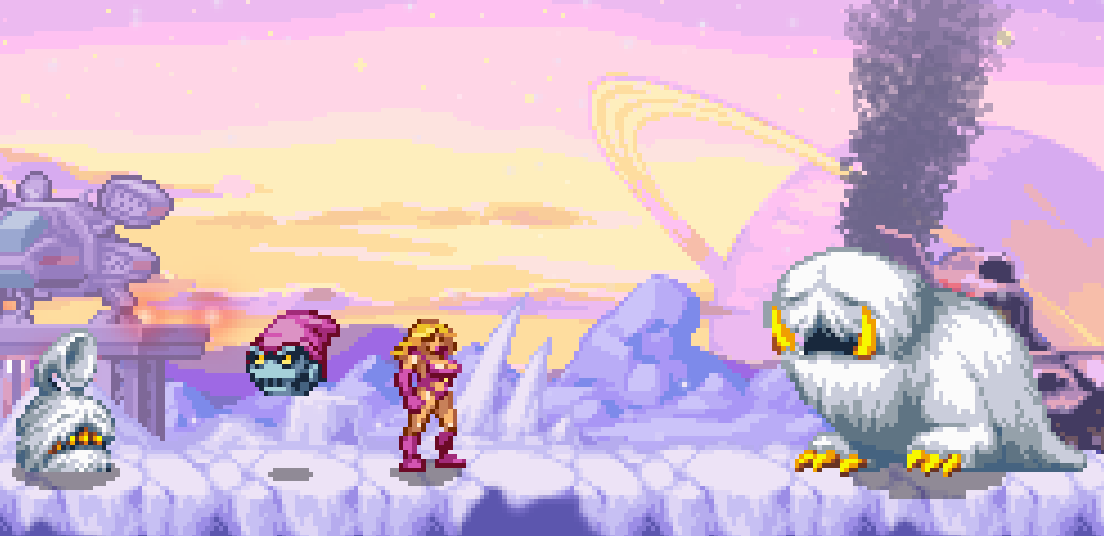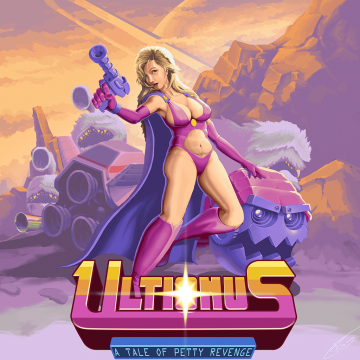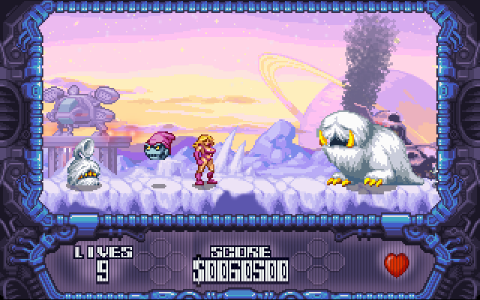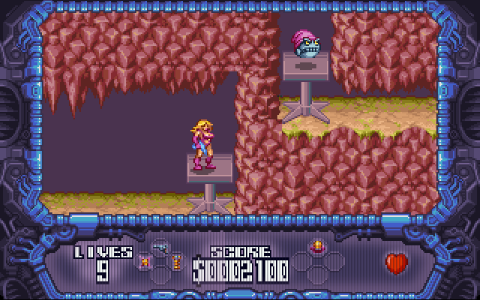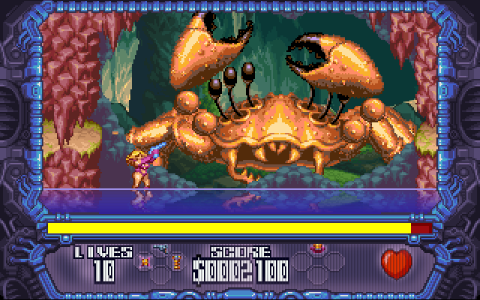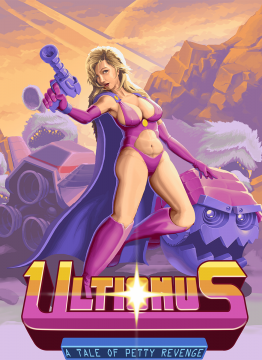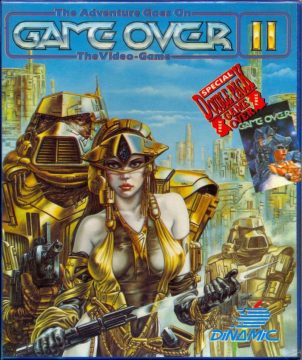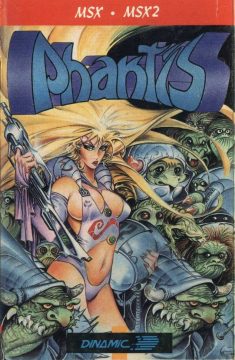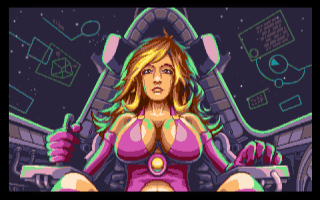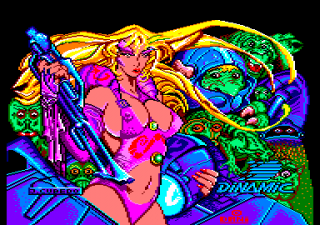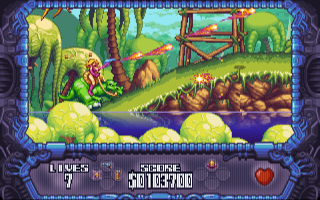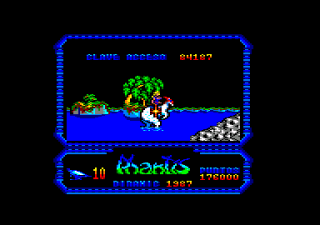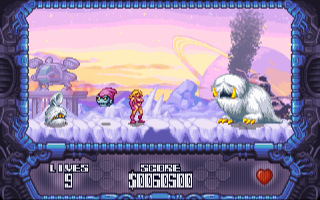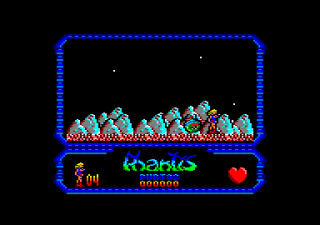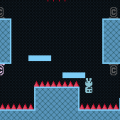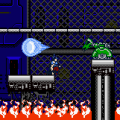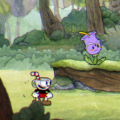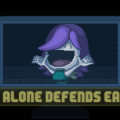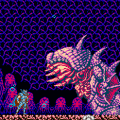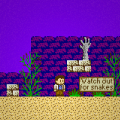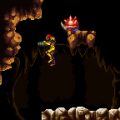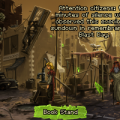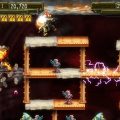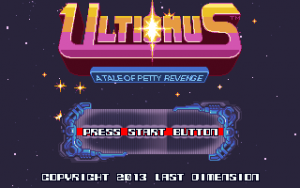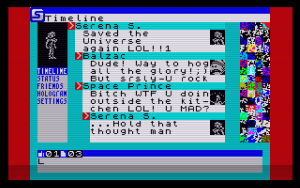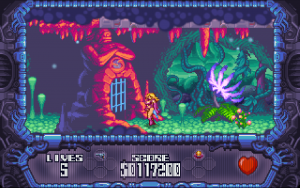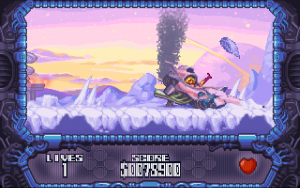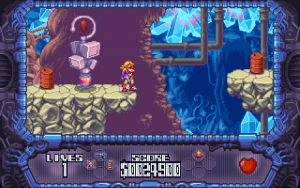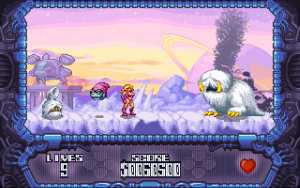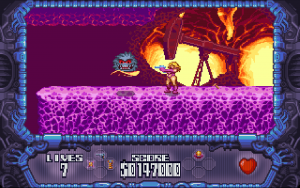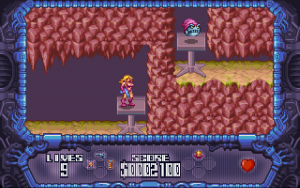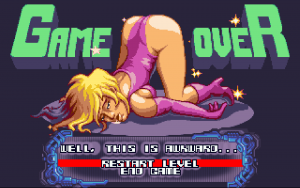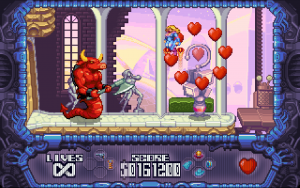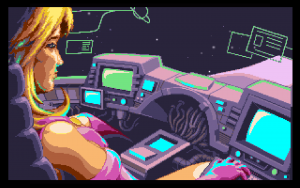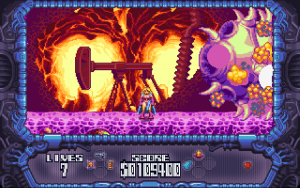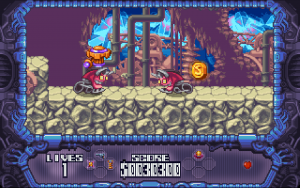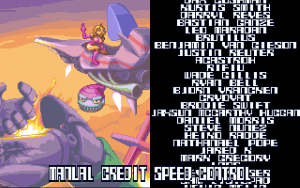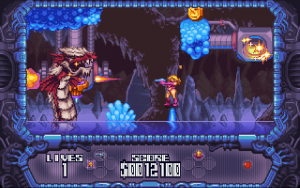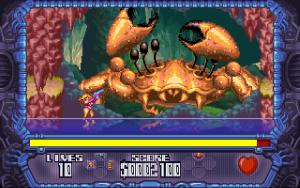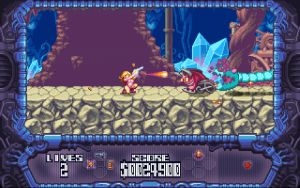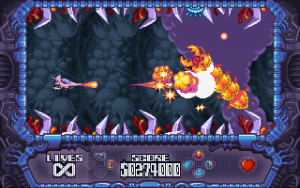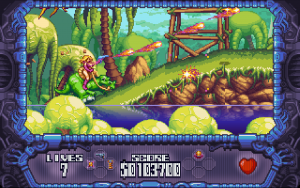Ultionus: A Petty Tale of Revenge looks like a typical attempt at a retro platformer at a glance, but it actually began life as a direct remake of the old Spanish Dinamic computer game Phantis. Those who have played the original game will find the design of the main character along with many of the game’s enemies and scenarios to be very familiar. However, while still a short game, it’s significantly larger than Phantis‘s abbreviated adventure. The game is also very nice to look at. It’s vibrant, with a good variety of detail and unique backgrounds, thanks to long time artist Andrew Bado. Bado has worked as a pixel artist for several years, most prominently with GameLoft and WayForward. The game’s heroine, Serena S, is also inspired by Phantis‘s female heroine, but her motivations have changed. Phantis‘s protagonist single handedly assaults a dangerous planet to exact revenge and rescue her captive boyfriend. In Ultionus, however, A Petty Tale of Revenge is a suitable subtitle, as Serena’s attack is inspired not by loyalty or romance, but by an internet troll.
Unfortunately, said troll is a powerful and foppish warlord known as the Star Prince, meaning lots of resistance for Serena S as she attacks this hostile world. If something seems oddly familiar to about Ultionus and Phantis even to players who have never heard of the latter, it’s because outside of Spain Phantis was renamed and marketed as the sequel to a mediocre Dinamic shooter named Game Over. While Game Over II‘s cover features the first game’s formerly captive princess as its new heroine, in the game itself she is changed to resemble a generic guy in a spacesuit to match the original Game Over. In making Serena the protagonist and removing the kidnapping completely, however, Bado has found a good compromise between homaging the aesthetics of the era in which games like Game Over were made while discarding some of the dumber elements of their presentation.
Ultionus also has enough effort put into its level design to make Phantis completely obsolete, though it still carries over some of that game’s flaws. The biggest of these is that Serena cannot move and shoot at the same time. Not unusual for a computer game from the mid 80s, but it can be frustrating in a game like Ultionus which features more enemies on the screen to deal with at a given time as well as a very slow rate of fire for Serena’s laser pistol. The slow rate of fire combined with even the weakest enemies taking two hits to defeat on the game’s default difficulty can make the game a bit tedious to play. An easy difficulty mode is available that fixes this and makes the game more fun, though it also gives the player infinite lives. Fortunately, like in older Castlevania games players can attack while in mid-air, and then immediately again after touching the ground, making it possible to cut through some of the game’s more durable enemies without losing much momentum or getting overwhelmed.
Serena also has a few tricks up her sleeve via some upgrades that can be purchased throughout the game. These can be found in shops that have to be unlocked by finding a coin hidden somewhere in four of the game’s levels. Each upgrade can either allow Serena to take extra damage or drastically improve her laser gun. Some of the levels are actually fairly straight forward, and poking around trying to find both the coin and shop in each one (along with fighting more enemies to earn enough points to actually by the upgrades) adds a light exploration element to the game reminiscent of Turrican and other side-scrollers in the 80s and early 90s but often missing from the nostalgic modern games they inspire. The number of upgrades is also higher than the number of times one as the opportunity to purchase them, meaning players can change the feel of the game depending on whether they want to prioritize more firepower or better defense.
The other thing to be on the lookout for is Serena’s wayward friend, Balzac. Balzac is extremely helpful during the game’s two shooter levels, but is a hapless captive for the rest of the game. Finding and freeing him in each level allows players to access the game’s final area and see the good ending illustration at the end. Both endings are accompanied by a chiptune house song by Luke “A_Rival” Esquivel from his 2013 album TRUTHCANNON. The rest of the game’s music is also excellent. While it’s not one of Jake “Virt” Kauffman’s most talked about soundtracks, it’s very effective at evoking the sound of similar retro games while still standing out on its own. Much like Ultionus itself, it may have begun as a modern take on Phantis, but tracks like Inner Sanctum are bit more evocative of the work of Japanese PC-98 and Genesis composers like Masaki Sasaki and Toshiko Tasaki.
Despite that aural distance from the game’s original inspiration, however, Ultionus‘ soundtrack is as fun as the game itself. While Serena’s inability to move and shoot simultaneously may initially make the game seem unfairly challenging, the levels are effectively build around this limitation. The gorgeous but restrictive stage graphics and design may make for a shock when players realize Serena’s agility is a bit restricted compared to more popular side-scrollers, but the game is more than the sum of its parts, making for a short but consistently charming and fun adventure.
